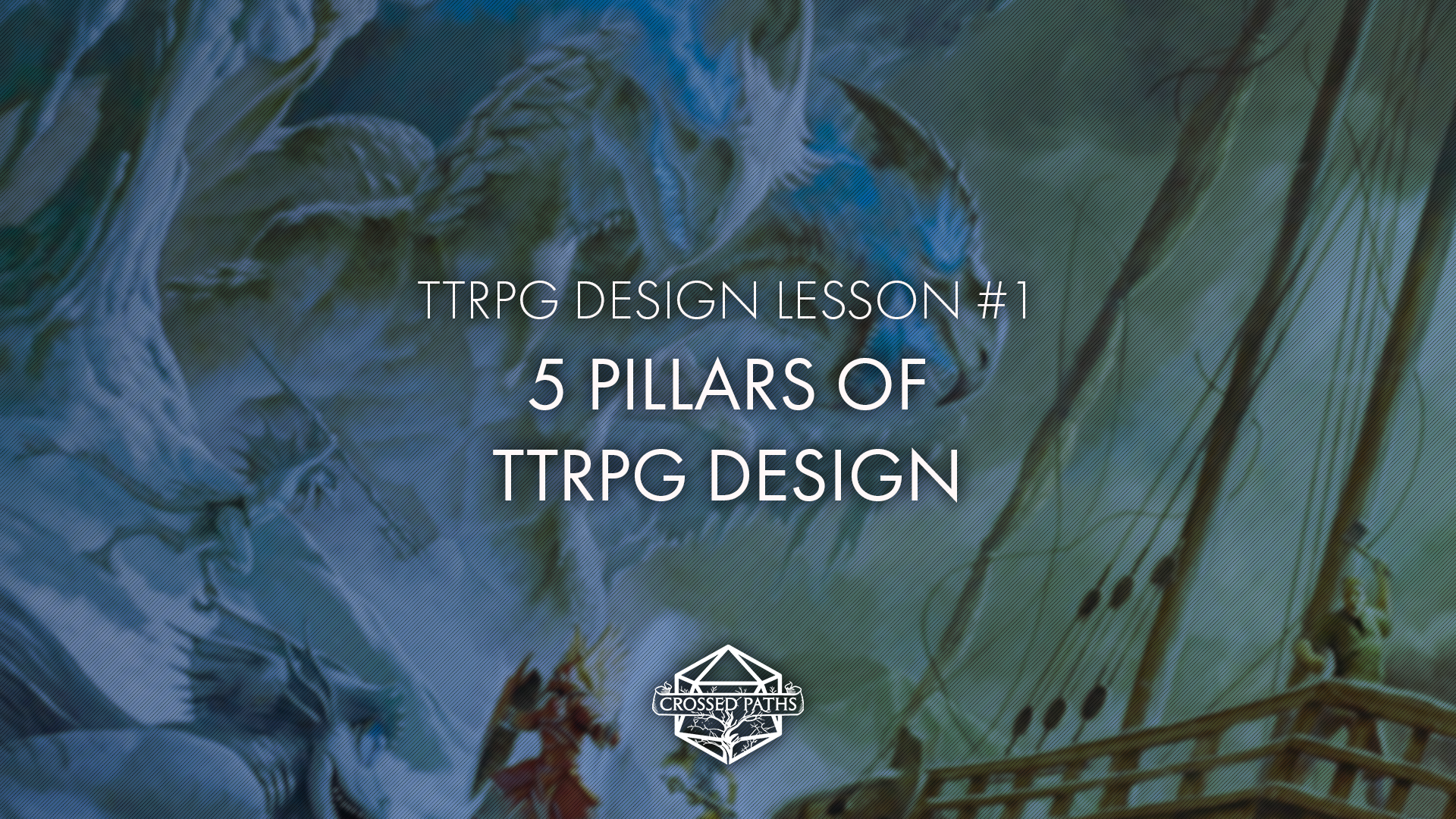TTRPG Design Lesson #1: 5 Pillars for Newcomers
Image: Wizards of the Coast
Over the last few months, I’ve been looking back at some of my recent projects and diving deeper into how they came about. I thought it might be helpful to document my thoughts so anyone else who is thinking about designing their own game can learn from what I’ve done and dodge any of the common pit falls you may come up against.
1. Find Your Inspiration.
As cheesy as this is going to sound, the first step in design is starting with an idea. This can be something as simple as ‘I want to make a game with cute mice’ to ‘I feel like this game could run smoother, I have some ideas that might work’.
I remember telling my partner about a game that all ages could play, even on their own, which centred around these mice folk I called ‘Gnawborn’.
She could tell how excited I was and told me to just go for it so with that stuck in my mind I got to designing. I have never designed a system before or knew where to even begin but that’s where the next step comes in.
2. Read Widely.
There is a Library of Alexandria level of TTRPG content out there with no shortage of new mechanics or ideas people are trying out. Immersing yourself in this world and trying out the plethora of games is a great way to understand how mechanics work together and maybe come up with some ideas of your own.
A good way to think about it is Pathfinder 1e is a hack of Dungeons & Dragons 3rd Edition and it isn’t until recently that they’ve revised PF2e rules to move away from D&D entirely.
There are some really good books that I recommend picking up if you’re keen to learn more; "The Kobold Guide to Game Design" by Wolfgang Baur offers deep insights into the craft as a whole, even containing tips on pitching your game and for mechanics and storytelling, "Rules of Play" by Katie Salen and Eric Zimmerman is an invaluable resource that dives deep into the reasons why the act of playing games can resonate with people so much.
3. Understand Your Audience.
This is a step that is slightly more focused on those of you who want to eventually sell your game to the masses but even anyone who want to just design for fun do need to decide exactly who your title is for.
As I mentioned earlier, Brambletrek was concepted as an all-ages TTRPG experience that could be played solo. This was huge for me as it meant I didn’t need to design anything for a Dungeon Master, no DM’s Guide needed here.
This did mean I had to focus much harder on the narrative structure. How could a self-guided game look? What kind of story could be told that any player could resonate with? This influenced everything from art concepts all the way to the words I used.
By identifying your audience before you even start designing you’ll have a much easier time decyphering your audience's preferences and provide them with a unique and satisfying experience.
4. Start Simple.
When I designed Brambletrek it was crucial to me that the game was familiar and accessible and so I decided on using a deck of cards over dice. The good thing about cards was almost everyone has a deck of cards just in a draw somewhere which drops one hurdle that I saw when running in person D&D games for newer players - ‘I don’t have any dice, can I still play?’
Using this as a foundation I built in a simple prompt system and at that point the game was essentially born, I will admit that I complicated things almost instantly by writing a really overtuned combat system. I won’t dive deep but basically; it required players to draw cards against an enemy’s defence card and then take the number drawn-
If I had to bet, most of you probably read that and started zoning out right? That is exactly what I didn’t want so I scaled it back to square one and built on it gradually. A straightforward foundation allows room for creativity and iterative improvements.
5. Embrace Iteration.
The heart of game design, in my opinion, is iteration. With Brambletrek this meant evolving the mechanics, making narrative improvements and adjusting gameplay based on feedback.
Feedback is worth it’s weight in gold for the simple fact that you can’t see all the flaws or faults in your game, I mean how could you? It’s your baby, your creation. You desperately want to believe it’s perfect but things rarely are.
This is also why I always tell new designer to get their playtesting done by people they don’t personally know. If you go with strangers, the feedback doesn’t feel personal, you are able to take emotion out of it and make changes based purely on the logic of what is being said to you.
It's crucial to view each version of your game as a step toward the final product, not the final product itself. Engage with a community of testers, keep an open mind, and be ready to revise and adapt. Things will click into place eventually but it takes tweaks and changes to get there.
Final Thoughts
Honestly, the best piece of advice I can give any budding writer and designer is; “Create what makes you happy.”
If you enjoy what you’re doing and you’re doing it for you first and foremost, this whole journey will be as fun as it can be!

